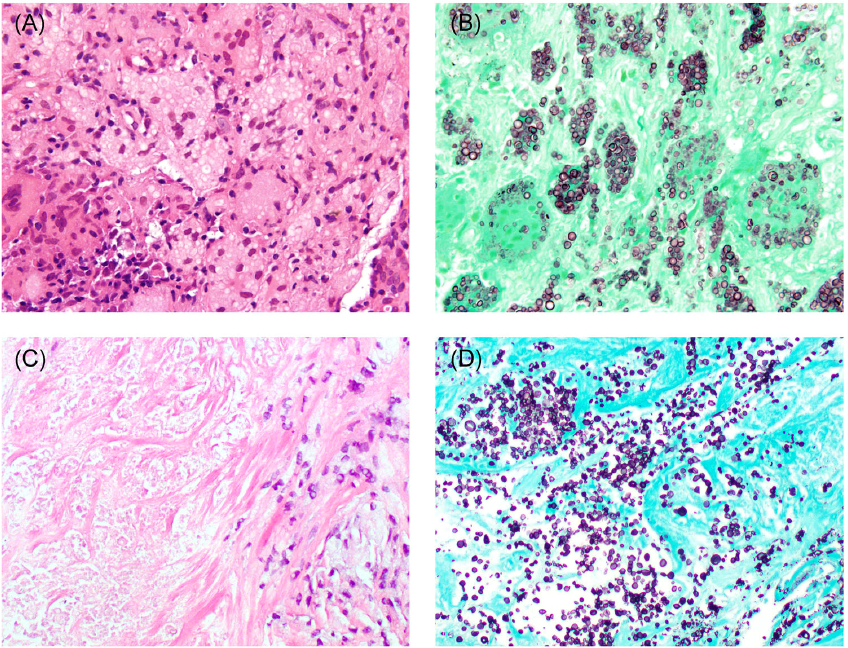One of the reasons for relapse of cryptococcal disease in AIDS is residual organisms in the prostate that are not eradicated by antifungal therapy (Larsen et al, 1989).
David Epstein and colleagues from the Southern California Permanente Group found 7 cases among >100,000 prostate biopsies (0.007%) and a further 8 cases in 2 other hospital systems. Biopsies showed fungi and granulomatous inflammation.
There were 7 cases of coccidioidomycosis, 3 of cryptococcosis and 1 of histoplasmosis among the 11 with any clinical data. The authors noted that prostatic blastomycosis and paracoccidioidomycosis are even rarer. The patients were asymptomatic or had non-specific symptoms. Most had no concurrent extraprostatic loci of infection though some had known of a prior fungal infection, and all those with cryptococcal prostatic infection were immunocompromised.
- Read the paper: Epstein et al (2020) Fungal prostatitis due to endemic mycoses and Cryptococcus: A multicenter case series

suspicious for Cryptococcus (A). Gomori Methenamine‐Silver (GMS) stain shows numerous cryptococcal forms (B) in histiocytes. Prostate with
necrosis (right) (C). GMS stain shows numerous cryptococcal forms (D) in tissue
